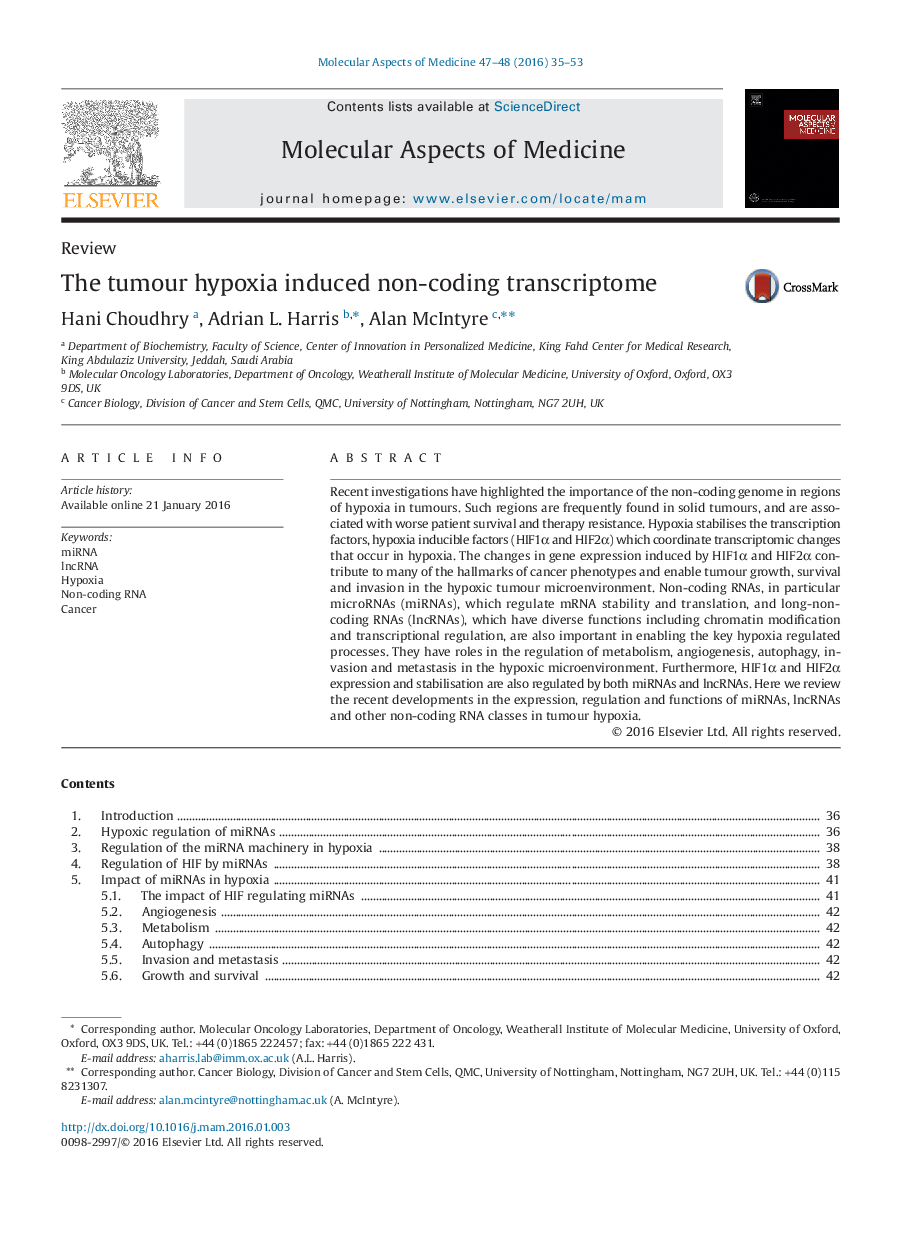| Article ID | Journal | Published Year | Pages | File Type |
|---|---|---|---|---|
| 1995605 | Molecular Aspects of Medicine | 2016 | 19 Pages |
Recent investigations have highlighted the importance of the non-coding genome in regions of hypoxia in tumours. Such regions are frequently found in solid tumours, and are associated with worse patient survival and therapy resistance. Hypoxia stabilises the transcription factors, hypoxia inducible factors (HIF1α and HIF2α) which coordinate transcriptomic changes that occur in hypoxia. The changes in gene expression induced by HIF1α and HIF2α contribute to many of the hallmarks of cancer phenotypes and enable tumour growth, survival and invasion in the hypoxic tumour microenvironment. Non-coding RNAs, in particular microRNAs (miRNAs), which regulate mRNA stability and translation, and long-non-coding RNAs (lncRNAs), which have diverse functions including chromatin modification and transcriptional regulation, are also important in enabling the key hypoxia regulated processes. They have roles in the regulation of metabolism, angiogenesis, autophagy, invasion and metastasis in the hypoxic microenvironment. Furthermore, HIF1α and HIF2α expression and stabilisation are also regulated by both miRNAs and lncRNAs. Here we review the recent developments in the expression, regulation and functions of miRNAs, lncRNAs and other non-coding RNA classes in tumour hypoxia.
